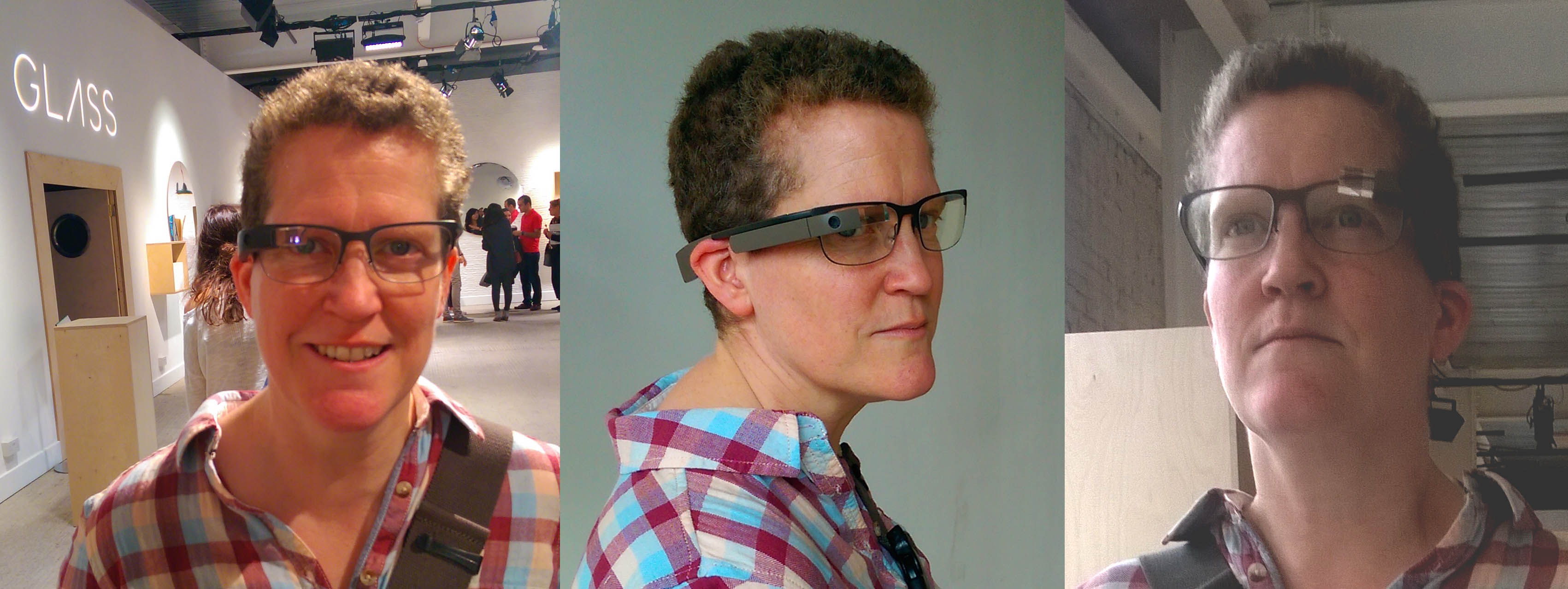
“OK glass”: Google Glass is, well, OK…
Thanks to my techno-geek friend Keith Mansfield, I had the opportunity to try out Google Glass at Google’s King’s Cross headquarters this weekend. In a relaxed, informal space – all white-washed walls and concrete floors – a group of friendly ‘Guides’ demoed a number of different apps backed up by a extremely gentle ‘sell’ of the vision of the Glasses and Google X, the division that invented them. The also entertained us with free canapes (including salted caramel marshmallows) and locally-sourced drinks (Dalston Cola anyone?)
Google Glass, we were told, is all about small, quick interactions, which enable users to retain eye contact, rather than interrupting human interaction to look down and consult a ‘phone. The specs aren’t intended to replace devices like your phone, though, and on the performance of the device under the full-on demands of plenty of testers on Saturday, it doesn’t seem – currently – to be able to cope with continuous use. Aside from run-down batteries, we encountered several pairs that informed us they needed to cool down before they could function effectively.
Here’s Google’s instructions about how to operate Google Glass:
Things I liked about Google Glass:
- Wearing these modified specs wasn’t as weird an experience as I had imagined. The electronics, attached to one arm and the front of one eye-glass, aren’t too heavy or obtrusive (although from some angles, I did feel that I looked a bit like Robocop – see below) and the actual screen doesn’t detract too much from ordinary life. I was pleasantly surprised, that when talking to someone else, you could easily forget the image or data that sat in your peripheral vision; I also like the fact that the screen timed out fairly quickly.
- Of the apps we saw, the killer app for me is ‘get directions’, where the benefits of not looking down at a phone when you’re walking through an area you don’t know are pretty obvious. The Word Lens app that enabled you to translate text wasn’t bad, though you could (and can!) do this through an ordinary phone.
Things that didn’t really wow me:
- The fact that you could use your phone as an interface for the same – and in some cases, better – apps, meant I wasn’t completely blown away by what I saw. For instance, I could see the appeal of the night-sky type app that let you look up at the sky, without needing your phone, and identified what you saw. But the app didn’t have the functionality that Google’s own Sky Map mobile app offers, of being able to enter an object and being told where to find it in the sky.
- Our Google guides were big on the ‘you don’t need to break eye-contact’ message, but, in fact, you do. Looking at the screen requires you to look up and to the side, an action that could be just as rude or intrusive as looking away to your phone. Of course, it’s quicker, but does that necessarily make it any less distracting?
A device like this is only going to appeal as much as the apps that run on it, and I’m sure these will improve. But, even so, while I applaud the attempt to integrate the interface that allows us to use multiple functions on our phones more seamlessly into our lives, I won’t be forking out £1000 for Google Glass any time soon. In fact, even if I managed to wangle a free pair, I think I’d show them off to my friends and then consign them to a drawer. I should point out the context that I probably wouldn’t describe myself as an early adopter in general, so don’t take my word for it. But for me, Google Glass – at least in its current incarnation – was, as the instruction used to launch its various apps says, “OK”.

